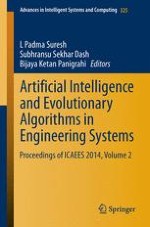The book is a collection of high-quality peer-reviewed research papers presented in Proceedings of International Conference on Artificial Intelligence and Evolutionary Algorithms in Engineering Systems (ICAEES 2014) held at Noorul Islam Centre for Higher Education, Kumaracoil, India. These research papers provide the latest developments in the broad area of use of artificial intelligence and evolutionary algorithms in engineering systems. The book discusses wide variety of industrial, engineering and scientific applications of the emerging techniques. It presents invited papers from the inventors/originators of new applications and advanced technologies.
